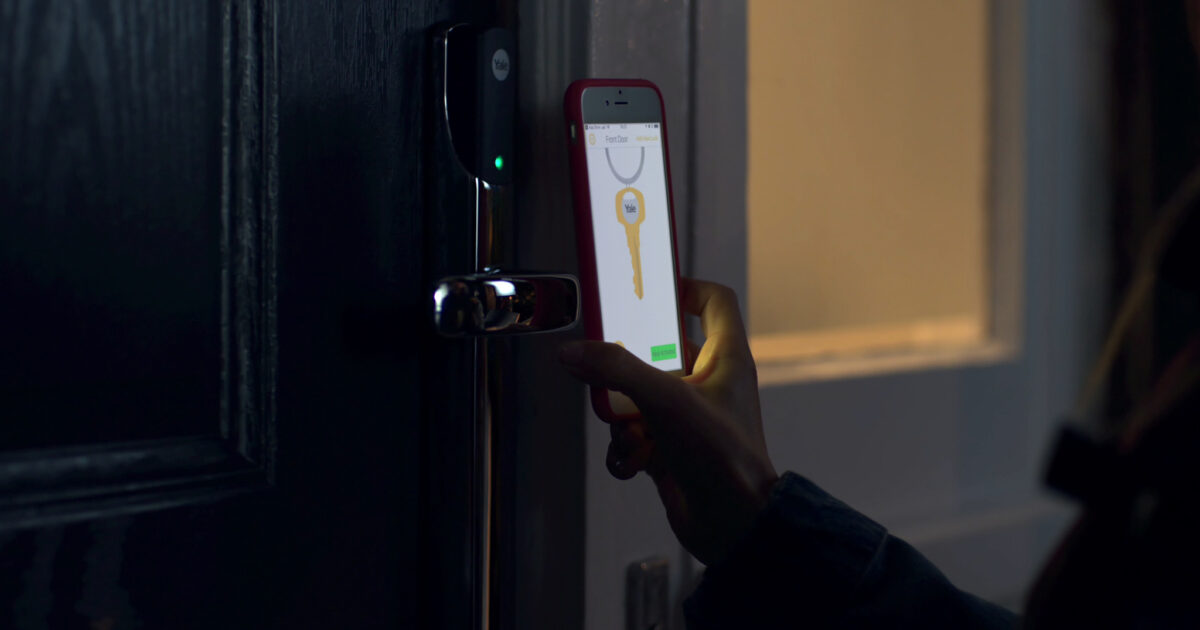Does Smart Lock Use Battery?
Have you ever wondered if your smart lock uses battery power? Smart locks indeed rely on batteries to function efficiently, but how much power do they consume, and what factors influence their battery life? Understanding the dynamics of smart lock battery usage is crucial for ensuring your home security system remains operational when you need it the most. Explore the intricate relationship between smart locks and battery life to make informed decisions about optimizing your device’s performance. Read Digital Door Lock in Hyderabad, Gurgaon & Delhi
How Smart Locks Operate
How do smart locks function to provide secure access to your home or property?
- Smart locks operate using a combination of operational mechanics and security features to ensure your premises are protected. When you approach your door, the smart lock’s motion sensors detect your presence and activate the system. To gain entry, you can use various methods such as a keypad, key fob, or mobile app, depending on the lock’s design. These devices communicate with the smart lock using Bluetooth, Wi-Fi, or Z-Wave technology, allowing for seamless access control.
- The operational mechanics of smart locks involve components like motors, gears, and sensors working together to enable locking and unlocking. The security features include encryption protocols, biometric authentication, and tamper alerts to prevent unauthorized access. In case of a power outage, smart locks often have backup power options like batteries or physical keys to ensure continuous operation. Understanding these operational mechanics and security features can help you make an informed decision when choosing a smart lock for your home.

Battery Life Expectancy
- When considering smart locks, it’s essential to understand the battery life expectancy to ensure optimal performance and security. Smart locks typically rely on batteries for power, and the longevity of these batteries can vary depending on factors such as power consumption and technology trends.
- Battery life expectancy for smart locks can range from several months to a few years. To maintain your smart lock’s functionality, regular battery replacement is crucial. Most smart locks are designed to provide low-battery alerts to prompt timely replacement. Ignoring these alerts can lead to your lock malfunctioning at a critical moment.
- To maximize battery life, it’s recommended to use high-quality batteries and keep the lock’s firmware updated. Furthermore, staying aware of power consumption patterns can help anticipate when battery replacement is needed. As technology trends evolve, newer smart locks may offer improved power-saving features that can extend battery life.
Factors Affecting Battery Drain
- To understand the impact on your smart lock’s battery life, it’s essential to consider various factors that can contribute to battery drain. Power consumption plays a crucial role in determining how quickly your smart lock utilizes its battery. Factors such as the frequency of locking and unlocking, the strength of the Bluetooth or Wi-Fi signal, and the type of communication protocol used can all influence power consumption. For instance, if your smart lock constantly communicates with your smartphone over a long distance, it can drain the battery faster due to increased power requirements.
- Moreover, the energy efficiency of the smart lock’s components also affects battery life. Components such as the motor that drives the lock mechanism, the sensors that detect movements, and the circuitry that processes commands all play a role in determining the overall energy efficiency of the smart lock. Choosing a smart lock with optimized components can help extend battery life by reducing energy consumption. By understanding and managing these factors, you can effectively mitigate battery drain and prolong the lifespan of your smart lock’s batteries.
Best Practices for Battery Optimization
- For optimal battery performance in your smart lock, implementing efficient usage practices is crucial to prolonging battery life.
- To optimize battery usage, consider the following battery-saving tips and energy-efficient features. Firstly, adjust the auto-lock timing on your smart lock to reduce the frequency of motorized actions, which can drain the battery. Additionally, enable power-saving modes if available to minimize energy consumption during idle periods. You can also disable unnecessary features like sound effects or LED lights to conserve battery power.
- Regularly check for firmware updates as manufacturers often release updates that improve energy efficiency. Furthermore, keep the smart lock clean and well-maintained to ensure smooth operation without putting unnecessary strain on the battery.
- Lastly, consider using high-quality batteries or rechargeable batteries with a high energy density for longer-lasting power. By following these battery optimization practices, you can maximize the lifespan of your smart lock’s battery and enjoy uninterrupted security and convenience.
Troubleshooting Battery Issues
- If your smart lock is experiencing battery issues, one common troubleshooting step involves checking the battery compartment for corrosion or debris that may be impeding proper contact. Corrosion can prevent a solid connection between the batteries and the terminals, leading to power interruptions. To address this, use a small brush or cotton swab with a bit of vinegar or lemon juice to clean the contacts gently. Ensure the compartment is completely dry before reinserting new batteries.
- If cleaning the contacts doesn’t resolve the problem, consider replacing the batteries. Using high-quality alkaline batteries is recommended for optimal performance. Additionally, implementing power-saving tips can help extend the battery life of your smart lock. These tips may include adjusting the lock’s auto-lock settings to reduce the frequency of motor use, keeping the lock firmware updated to improve efficiency, and minimizing unnecessary use of advanced features that drain battery power. By following these steps, you can troubleshoot and resolve battery issues with your smart lock effectively.
Conclusion
In conclusion, smart locks do use batteries to operate efficiently. It’s important to monitor the battery life expectancy and factors that may affect battery drain to ensure optimal performance. By following best practices for battery optimization and troubleshooting any issues that may arise, you can ensure that your smart lock functions smoothly and securely. Remember to always keep spare batteries on hand to prevent any disruptions in operation.


